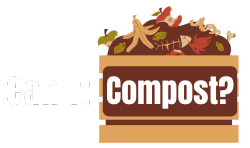Composting for Beginners: The Ultimate Step-by-Step Guide
Tired of seeing your kitchen trash fill up with food scraps? You're not alone. The good news? Composting for beginners is easier than you think, and this guide will show you everything you need to know to start composting at home successfully.
What is Composting, Anyway?
Composting is nature's way of recycling organic matter into a nutrient-rich soil amendment often called "black gold." It's the process where microorganisms, fungi, and other decomposers break down organic materials like food scraps, yard waste, and paper into a dark, crumbly substance that's perfect for enriching your garden soil and helping plants thrive.
The "Why": Top 3 Benefits of Composting at Home
Reduces Waste
About 33% of landfill waste is compostable organic matter. By composting at home, you're diverting this waste from landfills and reducing your environmental footprint.
Creates Free Fertilizer
Compost improves soil structure, retains moisture, and provides essential nutrients to your plants. It's like giving your garden a superfood that costs nothing to make.
Helps the Planet
Composting reduces methane emissions from landfills and creates a closed-loop system where your waste becomes a valuable resource for growing more food.
The Perfect Compost Recipe: Understanding Browns, Greens, and Water
Think of composting like cooking - you need the right ingredients in the right proportions. The magic happens when you balance carbon-rich "browns" with nitrogen-rich "greens" and add just the right amount of water.
🌿 Browns (Carbon)
These provide energy for microorganisms and help create air pockets:
- • Cardboard (shredded)
- • Newspaper
- • Fallen leaves
- • Sawdust
- • Straw
- • Pine needles
🥬 Greens (Nitrogen)
These provide protein for microorganisms to grow and multiply:
Pro Tip: To learn more about balancing these materials, check out our detailed guide: Browns vs. Greens: The Secret to Perfect Compost
How to Start Composting in 5 Simple Steps
Step 1: Choose Your Composter
You have several options for home composting. Choose what works best for your space and lifestyle:
- • Compost Bin: Enclosed container perfect for backyards, keeps pests out
- • Tumbler: Rotating bin that makes turning easier, great for small spaces
- • Simple Pile: Just start a pile on the ground - the most basic option
- • Worm Bin: Indoor option using red wiggler worms (vermicomposting)
Step 2: Pick a Good Location
Location matters for successful composting. Here's what to look for:
- • Level ground with good drainage
- • Partial sun - not too hot, not too shady
- • Convenient access from your kitchen and garden
- • Near a water source for easy watering
- • Protected from strong winds
Step 3: Lay Your Foundation
Start your pile with a 4-6 inch layer of bulky "browns" to create air pockets and drainage:
- • Shredded cardboard or newspaper
- • Fallen leaves or straw
- • Sawdust or wood chips
- • Pine needles
Step 4: Add Kitchen and Yard Waste
Use the "lasagna" method - alternate layers of greens and browns. For every 2-3 inches of greens, add 4-6 inches of browns:
- • Greens: Vegetable scraps, grass clippings, coffee grounds
- • Browns: Shredded cardboard, dried leaves, newspaper
- • Mix well to distribute moisture and microorganisms
Step 5: Maintain Your Pile
Keep your compost healthy with these simple maintenance tasks:
- • Moisture: Should feel like a damp sponge - not too wet, not too dry
- • Turning: Mix the pile every 1-2 weeks to add oxygen
- • Size: Aim for at least 3x3x3 feet for optimal heating
- • Balance: Add more browns if it's too wet, more greens if it's too dry
What NOT to Compost: A Quick List for Beginners
While most organic matter can be composted, some items should be avoided to prevent problems:
Meat & Fish
Attracts pests and can create odors
Dairy Products
Can create odors and attract pests
Oily Foods
Can slow decomposition and create odors
Pet Waste
May contain harmful pathogens
Diseased Plants
Can spread disease to your garden
Weeds with Seeds
Seeds may survive and sprout in your garden
Plastic & Synthetic Materials
Won't break down and can contaminate compost
Coal Ash
Contains harmful chemicals
Frequently Asked Questions
How do I know when my compost is ready?
Finished compost looks dark and crumbly, like rich soil. It should have an earthy smell and no recognizable food scraps. The process typically takes 2-6 months depending on your method and maintenance. You can sift out finished compost and return larger pieces to the pile for further decomposition.
Why does my compost pile smell bad?
Bad smells usually indicate an imbalance. A rotten egg smell means too much nitrogen (greens) - add more browns. A sour smell means too much moisture - add dry browns and turn the pile. A properly balanced pile should have an earthy, pleasant smell.
Do I need to add worms to my compost?
Worms are helpful but not required for outdoor composting. They'll naturally find your pile and help break down materials. For indoor composting, red wiggler worms are essential for vermicomposting systems.
How long does composting take?
Composting time varies by method: hot composting (2-3 months), cold composting (6-12 months), and vermicomposting (2-3 months). Factors like pile size, materials used, turning frequency, and weather all affect the timeline.
Ready to Start Your Composting Journey?
Composting for beginners doesn't have to be complicated. With the right knowledge and a little patience, you can turn your kitchen scraps into garden gold while making a positive impact on the environment.
Remember: Every expert was once a beginner. Start small, be patient with the process, and don't be afraid to experiment. Your garden and the planet will thank you!
Search What You Can Compost